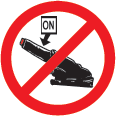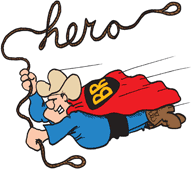 This December, the stars will align for the rebirth of one of California’s most historic motorcycle races – the Red Bull Catalina Grand Prix. The famed race, which was held between 1951 and 1958, brought thousands of spectators and hundreds of riders to Catalina Island, helping establish it as the bustling tourist destination it is today. Caption & Image Credit: Red Bull USA
This December, the stars will align for the rebirth of one of California’s most historic motorcycle races – the Red Bull Catalina Grand Prix. The famed race, which was held between 1951 and 1958, brought thousands of spectators and hundreds of riders to Catalina Island, helping establish it as the bustling tourist destination it is today. Caption & Image Credit: Red Bull USARed Bull Catalina Grand Prix 2010 - Pre-Event Update
The Red Bull Catalina Grand Prix 2010 is a closed-course motorcycle racing event sanctioned by the American Motorcycle Association.
Due to lax technical inspection, the 1950s era races were considered a “proving ground” for various types of suspensions, engine and frame modifications and special tunings. The Red Bull Catalina Grand Prix 2010 will follow its 1950s open class tradition by providing races for a wide variety of engine displacement and skill levels.
The field is expected to include almost 800 riders who registered prior to the October 7 deadline. There will be 12 races over the two days with an average of 80 riders per race. The Red Bull Catalina Grand Prix will be AMA sanctioned and all AMA rules will be followed.
The event is free to the public, and no tickets are required. All participants, spectators, and Press are expected to drop by the Hotel Metropole for check in, race registration, general event information/updates, food, and drinks. Image Credit: Catalina Grand Prix 2010
Image Credit: Catalina Grand Prix 2010The event is held over a three day period starting on Friday December 3, 2010 with a moderately priced charity golf tournament to benefit the AMA Legal Defense Fund and Riders Helping Riders. Green Fees are only $30.00 per player with Club Rentals at $11.00 a set and Golf Carts at $10.00 per player. To participate, please call 310-510-0530 begin_of_the_skype_highlighting 310-510-0530 end_of_the_skype_highlighting begin_of_the_skype_highlighting 310-510-0530 end_of_the_skype_highlighting for a tee time (if available) - all participants must mention that they are"with the Catalina Grand Prix".
Friday night is the official Red Bull Party to kick things off before competition begins. - details can be found at the Hotel Metropole! Updated information found at Dirt Bike Magazine>>
The racing event will be held over two days on December 4-5, 2010, and be held on an approximate 7 mile course. The course will include natural, graded, and paved terrain that includes a Motocross section (80% dirt, 20% paved). Grandstands are available for spectators and they will be located at the Start/Finish line and the Motocross section.
“I’m stoked to be part of this historic race,” said four-time Baja 1000 winner and 2010 AMA National Hare & Hound champion, Kendall Norman. “I’ve heard so much about it - the pioneers of the sport racing their old-school bikes in one of the most unique locations imaginable. It’s great that we’ll finish off the season with what’s sure to be one of the most fun races of the year.”
Both motocross superstars and emerging talents will vie for top honors as they blast into the hills surrounding the main port town of Avalon. Riders will look to join Bud Ekins (the stuntman who performed the famous fence jump in “The Great Escape” for Steve McQueen) and Bob Sangren (the race’s only two-time winner) as champion of the island spectacle. Sangren will also be returning to the island to serve as Grand Marshal for the 2010 race.
 Image Credit: Catalina Grand Prix 2010
Image Credit: Catalina Grand Prix 2010Let the races begin - SCHEDULE:
SATURDAY, DECEMBER 4, 2010
7:30 Opening Ceremony
Race 1 8:15 $250
Classic Skill A & B
Vintage Skill A & B
Evolution Skill A & B
Premier LWT Skill A & B
Premier 500 Skill A & B
Premier Open Twins Skill A & B
Race 2 9:30 $250
Magnum 50+ LWT Skill B
Magnum 50+ HWT Skill B
Race 3 10:45 $250
Magnum 50+ LWT Skill A
Magnum 50+ HWT Skill A
Race 4 12:00 $250
Senior 40+ LWT Skill B
Senior 40+ HWT Skill B
Race 5 1:15 $250
Senior 40+ LWT Skill A
Senior 40+ HWT Skill A
Race 6 2:30 $250
Veteran 30+ LWT Skill A & B
Veteran 30+ HWT Skill A & B
Saturday night at the Casino, a special Casino movie will be shown at 8:00 PM with special guest appearance from Nitro Circus! Updated information found at Dirt Bike Magazine>>
SUNDAY, DECEMBER 5, 2010
Race 7 8:00 $250
HWT Skill B
Race 8 9:15 $250
HWT Skill A
Race 9 10:30 $250
125cc Skill A & B
250cc Skill A & B
Race 10 11:45 $250
Mini Skill A & B
Women Skill A & B
60+ Skill A & B
70+ Skill A & B
Race 11 1:00 $150
Super Mini Skill A & B
Youth Mini Skill A & B
Junior Mini Skill A & B
Micro Mini Skill A & B
Race 12 1:45 $300 GPR Pro Race $5,000 purse
Pro 18+
Pro 30+
Pro 40+
For racers and fans staying over on Sunday, December 5th, join the locals for the annual Shop At Home Night. The holiday festivities kick off with a tree lighting ceremony on the Wrigley Stage on the waterfront in Avalon. Santa Claus arrives by fire truck and strolling carolers will be serenading the shoppers. Participating store will be staying open late, many offering refreshments and holiday treats in addition to bargain prices.
Catalina Island Chamber of Commerce President & CEO Wayne Griffin also invites guests to enjoy the Tour Of Lights to drop off a new unwrapped toy for the Toys 4 Tots program for the local children. Get your treasure card stamped and enter to win reservations for two to the 2010 New Year's Eve Gala on the Island.
Again, the event is free to the public, and no tickets are required. All event information, updates, and check in happen at the Hotel Metropole.
... notes from The EDJE





































